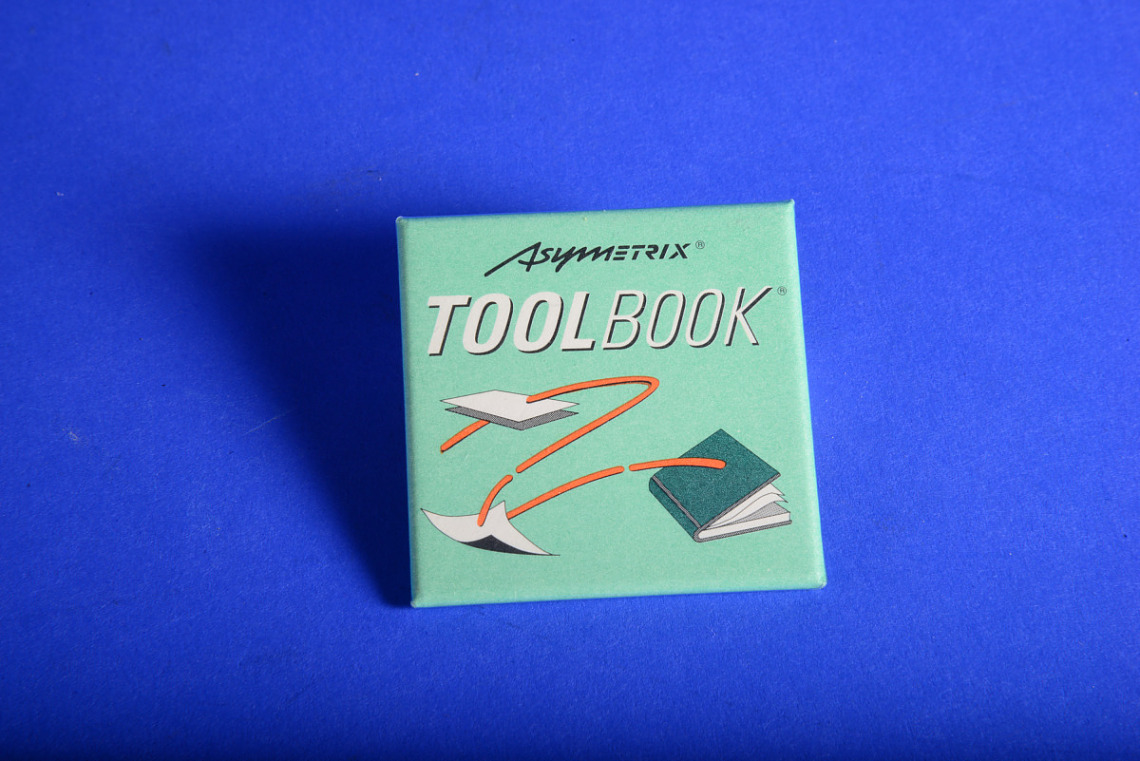RD3: The Demise of Toolbook and Implications for Its Users
July 14, 2021

Once upon a time, there was an eLearning content authoring application that was widely adopted by the aviation training industry. This authoring tool was called Toolbook.
It’s important to understand that Toolbook was created by a powerful tech company with deep resources, not a small garage-based startup. Toolbook was developed by a company called Asymetrix Learning Systems, which was funded by Paul Allen, the co-founder of Microsoft. Over time, this company went through several transformations, changing its name from Asymextrix Learning Systems to Click2Learn to SumTotal. During this journey, a lot of investment dollars poured in, which subsequently were used to merge and grow the company.
Toolbook Presented Several Benefits for Avsoft’s eLearning Course Creation
There are several reasons why Avsoft initially started to develop courses using Toolbook.
One of the primary reasons is that Toolbook used a book metaphor. In Toolbook, a book is a collection of pages, and each page was a slide. In a classroom, the instructor talks and shows slides at the same time. A book does the same thing, except that written text is used instead. Using a presentation software that mimicked this process made sense.
The other reason was that we could write code to make things happen on a page – an animated bullet point, for example. This programming language was pretty powerful, and you could write code that applied to a particular button on a page, to the whole page, or to all pages inside a book. This was very effective, and we developed an interactive FMS trainer using Toolbook.
Drawbacks Associated with Toolbook
However, there were things we didn’t like about Toolbook.
You had to manually add at least one graphic and one audio to each page of the book. This process works OK and can be done error free when there’s roughly a dozen pages, but when you have a course that consists of 2,500+ “pages” (i.e., 5,000 combined graphics and audio clips to add), it was extremely time consuming and virtually impossible to complete this process error free.
We also had problems with the interface of the book. The interface refers to the buttons that made “things” happen on each slide. You could write code that applied to each page of the book, and that’s how the interface was created. However, an aircraft systems course has many modules – sometimes up to 30, with each module covering a particular topic such as Electrical.
If your interface changes, you need to update each module with the new interface – in this example, 30 updates would be required. If you have 10 different courses, then you must make 300 updates. The solution to this problem was to come up with an interface that we wouldn’t need to update this frequently.
Over time, we discovered that there were some technical issues with Toolbook as well. The code we wrote would work on a majority of the workstations, but once in a while it would fail on others. After we figured out how to fix the issue, we would have to update the interlace to incorporate the corrections, and that resulted in a huge amount of work.
Eventually, we determined that these issues made Toolbook a poor solution for our needs. This inspired us to create a one-file delivery system, and that meant that we had to store the information that makes up the course in a container. This is where RD3 was born.
The End of the Line for Toolbook
Toolbook was very popular at first, but has steadily fallen out of favor over time. In fact, last month, SumTotal released an end of life statement for Toolbook, and that’s really bad news for any training organizations that have courses developed using the platform. Unfortunately, there are a lot of Toolbook users experiencing issues due to the discontinuation of the platform.
Options for Existing Toolbook Users
Toolbook files end with the .tbk extension, and you could export this .tbk file either with DHTML web pages or compile it into an executable (e.g., a program that you could install and run). Because of this, there’s 3 cases to consider:
- Case 1: your courses are in executable format only, and you do not have the source files (.tbk extension)
- Case 2: you have the source files (.tbk extension)
- Case 3: you have the DHTML export of the course, but no source file
Case 1
Case 1 is going to be the most expensive situation to remedy. The reason is that if the files are wrapped inside the executable, there is no way to extract them. This is also true for the audio files. As a result, you’re forced to recreate everything from scratch. You’ll be in luck if the graphics and audio are stored outside of the application, because it will considerably cheaper to remedy the situation.
Case 2
Case 2 is going to be cheaper, but not by much. It’s possible to export the graphics and audio from a Toolbook file, but it’s not easy, and it will be a time consuming operation. As a result, it will still be expensive.
Case 3
Case 3 is the cheapest because of the nature of web pages – all the information that makes the page work is available, and therefore is open to being modified.
Important Takeaway from the Demise of Toolbook
There’s a moral to this story: if you are going to use a particular authoring tool, make sure that you can easily convert it or import it into a different system because there’s no guarantee that the current popular method will be around forever.

